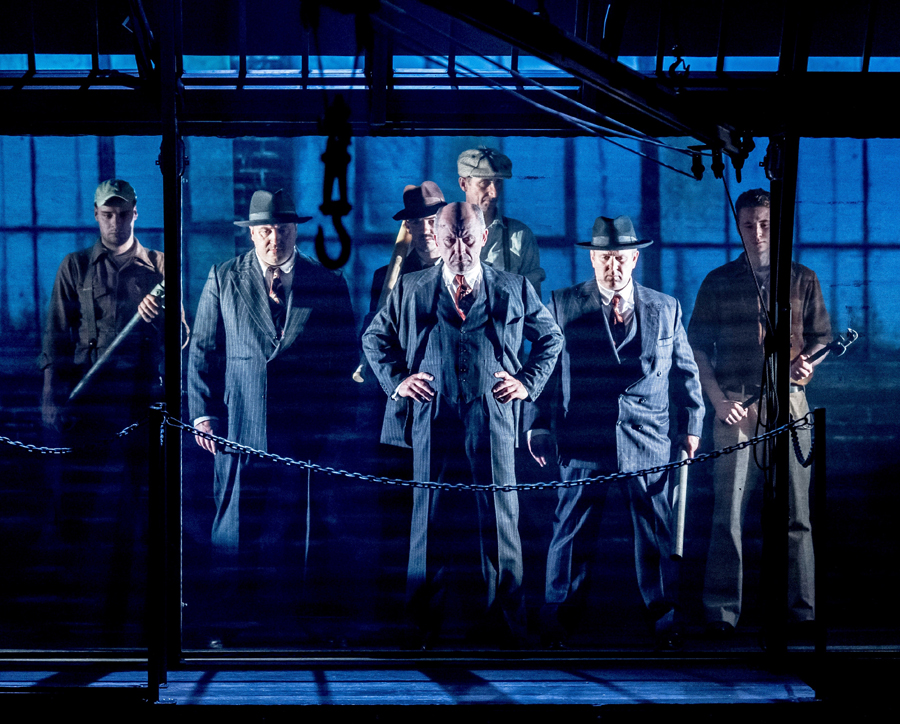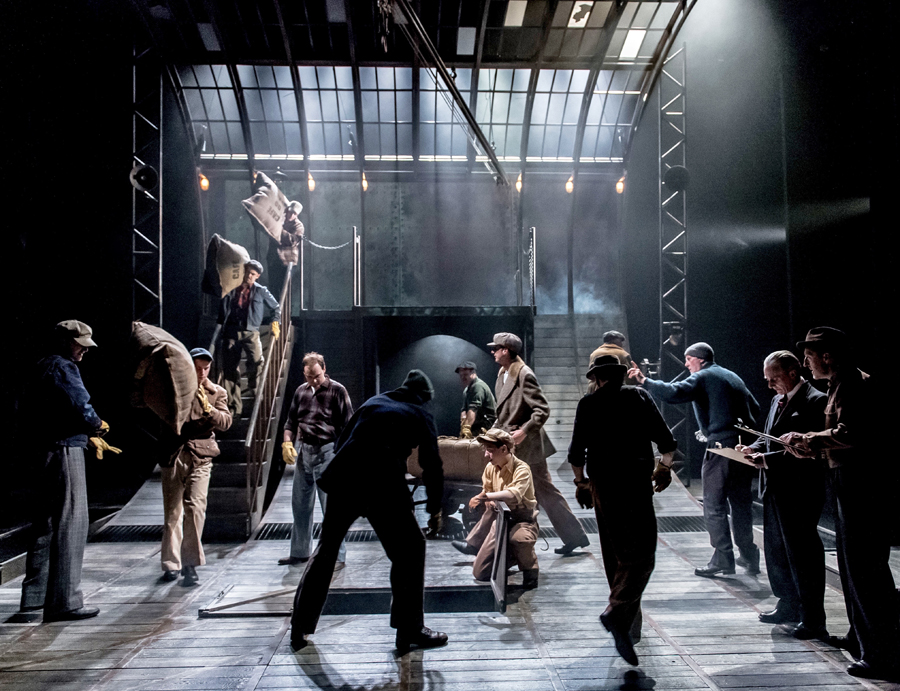 In the mid 1940’s Miller was captivated by the Red Hook neighbourhood of Brooklyn that contained so many docks and landing piers. He was fascinated by the close community of longshoremen (dockers) and their precarious life of casual day hire, unsafe working practices and exploitation by corrupt Union officials in thrall to the Mafia. Intrigued by the death of Pete Panto, a longshoreman who vanished after confronting Union corruption, Miller wrote “a play for the screen", believing that cinema could be a more democratic way of playing his story to the community he was writing about.
In the mid 1940’s Miller was captivated by the Red Hook neighbourhood of Brooklyn that contained so many docks and landing piers. He was fascinated by the close community of longshoremen (dockers) and their precarious life of casual day hire, unsafe working practices and exploitation by corrupt Union officials in thrall to the Mafia. Intrigued by the death of Pete Panto, a longshoreman who vanished after confronting Union corruption, Miller wrote “a play for the screen", believing that cinema could be a more democratic way of playing his story to the community he was writing about.
Miller’s Panto is Marty Ferrera, a loud-mouthed and opinionated longshoreman, complete with docker’s hook round his neck. He is also, as Miller himself wrote, that “strange, mysterious and dangerous thing” that is a “genuinely moral man…it’s as though a hand had been laid upon him, making him the rebel, pressing him towards a collision with everything that is established and accepted.” What is established and accepted on the docks is the injustice and corruption of a system that sees work awarded in exchange for bribes, making the hand-to-mouth existence of the longshoremen even more precarious. Marty makes his stand against the system when he can no longer support his wife and child, denied work even after offering his own bribe. So he decides to stand for Union President to address the issues head on.
But Marty Ferrera never reached the screen. Pressure from Hollywood executives and arm-twisting by the FBI who worried it would foment dissent in the dockyards, caused Miller to abandon the project and his director, Elia Kazan, went on to make the more acceptable On the Waterfront some five years later.

So how come the play is receiving its world premiere at Northampton’s Royal and Derngate Theatres this year? It’s down to the painstaking work the theatre's Artistic Director James Dacre has put in on realising the project. Of course his staging, a co-production with Liverpool's Everyman, coincides with the centenary of Miller's birth and Dacre says this timely play “talks about the living wage, zero-hours contracts and industrial communities on the brink of enormous change.” Together with designer Patrick Connellan, Dacre spent years collating Miller’s drafts of the play, illuminated by Miller’s own notes. But what we see has been pulled together into a more than workable script by playwright Ron Hutchinson, who proved he has a special insight into and era for Americana in his brilliant Hollywood comedy Moonlight and Magnolias (charting the painful birth of Gone With the Wind, the movie). Hutchinson was struck by the way Miller went out of his way to avoid stock characters and show just how the main protagonists are neither all good nor bad.
The challenge for the team has been to translate something written for the scale of the cinema into a stage production. Connellan’s brooding set, thanks to clever use of Nina Dunn’s projections and Charles Balfour’s moody lighting, is dockyards, streets, offices and homes, allowing all the cross-cutting demanded by the filmic element of the script. There is more than a nod here to film noir and the strictures of black and white lighting.
Dacre marshals his cast as if they are a vital part of the intercutting, and working with movement director Struan Leslie, choreographs the transitions between scenes with beautiful precision and speed.

Jamie Sives as Marty Ferrera (pictured centre, at the top of the review) is suitably Brando-esque as required, yet brings out the humanity of this common man in a way Miller would have appreciated. Susie Trayling, as Marty’s passively supportive and docile wife Therese is nicely understated in a part that’s reminiscent of Linda Loman in Death of Salesman. Joseph Alessi gives a commanding performance as the ruthless Union Chief (if anyone is the man you love to hate, he is!) and the ensemble is effectively swelled by a community ensemble of local amateurs, totally convincing in the non-speaking crowd scenes. Some of the professionals, though, occasionally distract with slightly wandering New Jersey accents.
It’s not in the end as completely satisfying as Miller at his best in the plays we know and love, but it is a compelling study in treachery and probity and the ongoing struggle for social justice for the working man. It all makes for a genuinely exciting evening, with unexpected and twists and turns in a story perhaps more fast-moving yet less in-depth than in Miller’s dedicated stage plays.
By Judi Herman
Photography by Manuel Harlan
The Hook runs until Saturday 27 June. 7.45pm & 2.30pm. £10-£29. Royal & Derngate, Northampton, NN1 1DP; 016 0462 6222. www.royalandderngate.co.uk
The show then moves to Liverpool Wednesday 1 - Saturday 25 July. 7.30pm. £12-£20. Everyman, Liverpool L1 9BH; 015 1709 4776. www.everymanplayhouse.com
